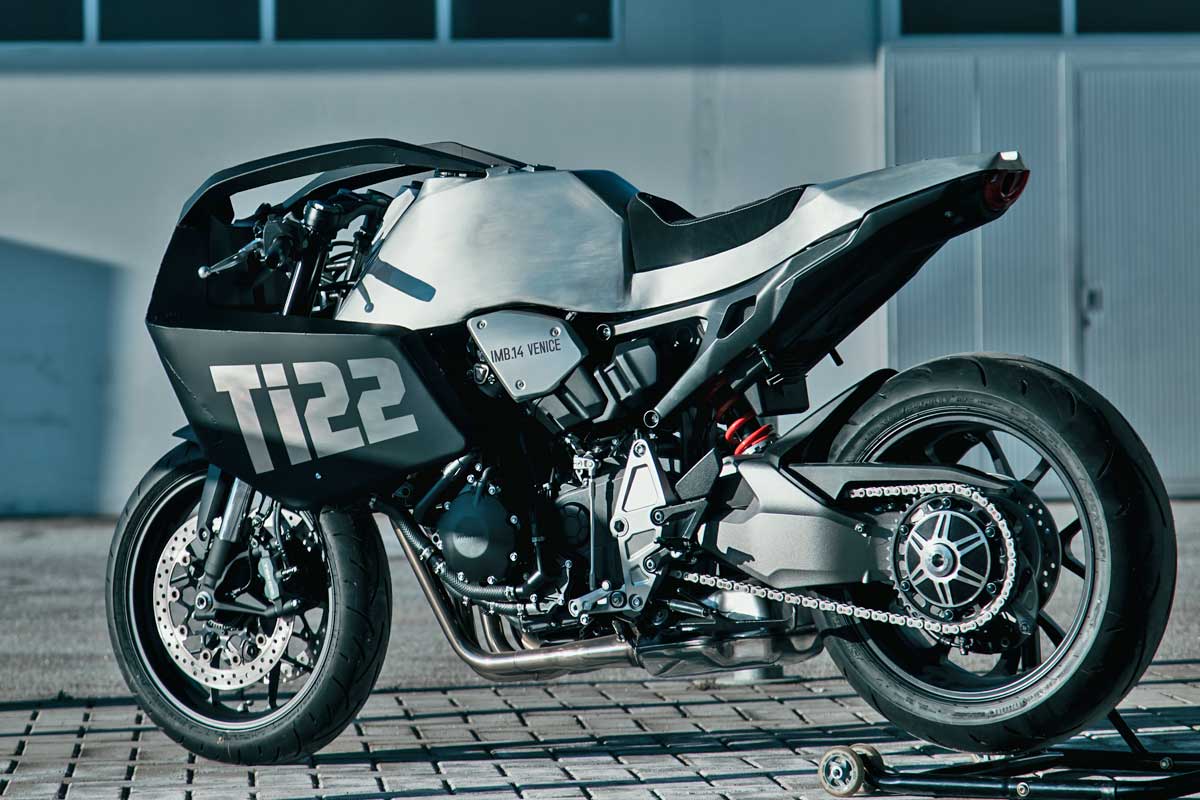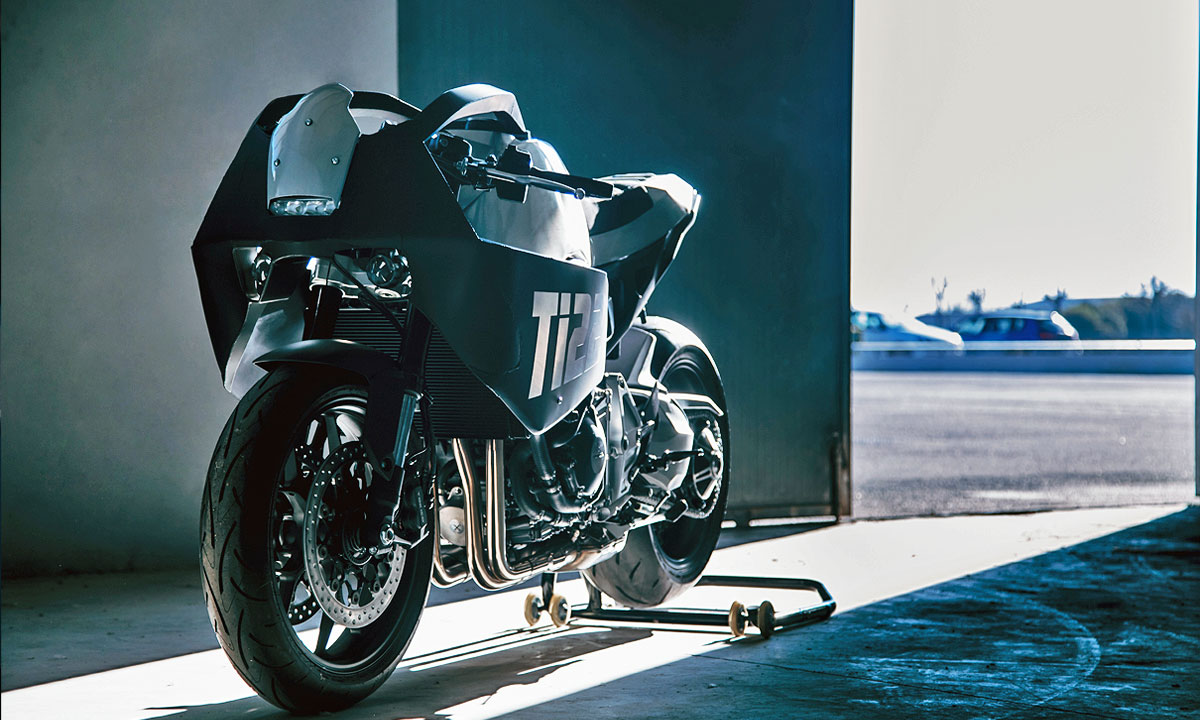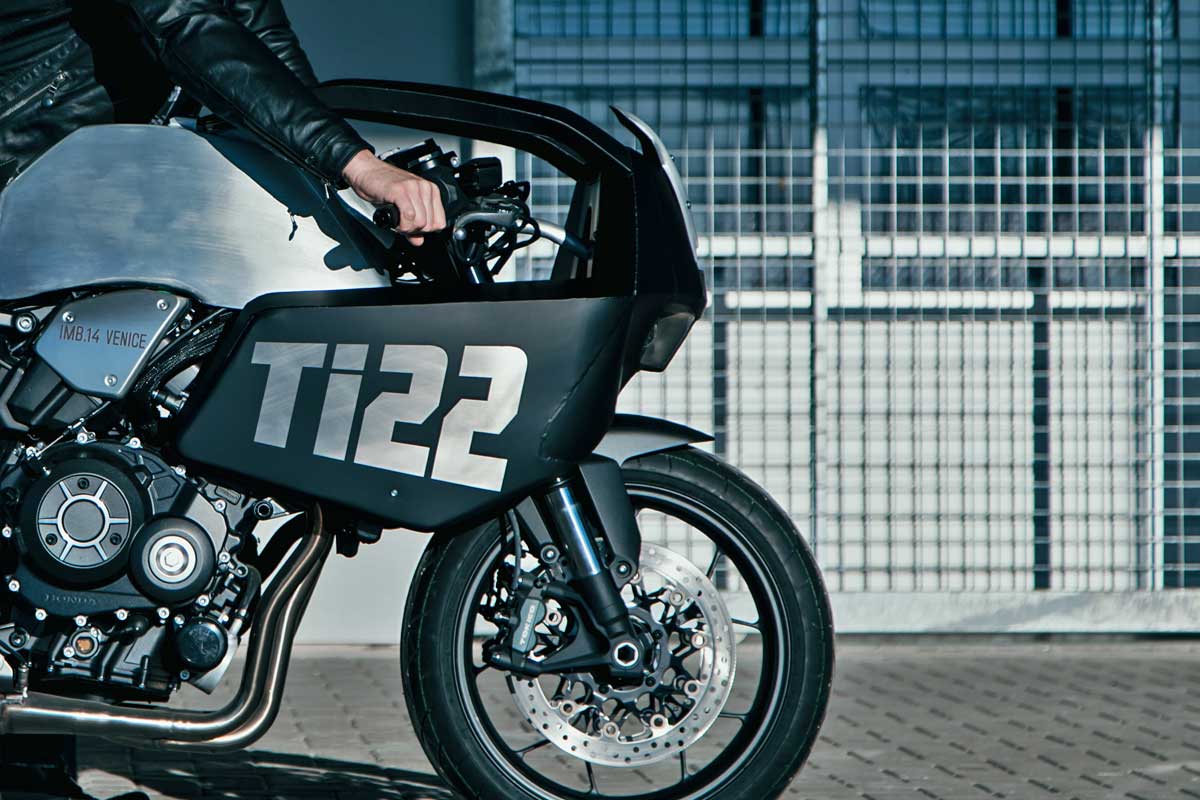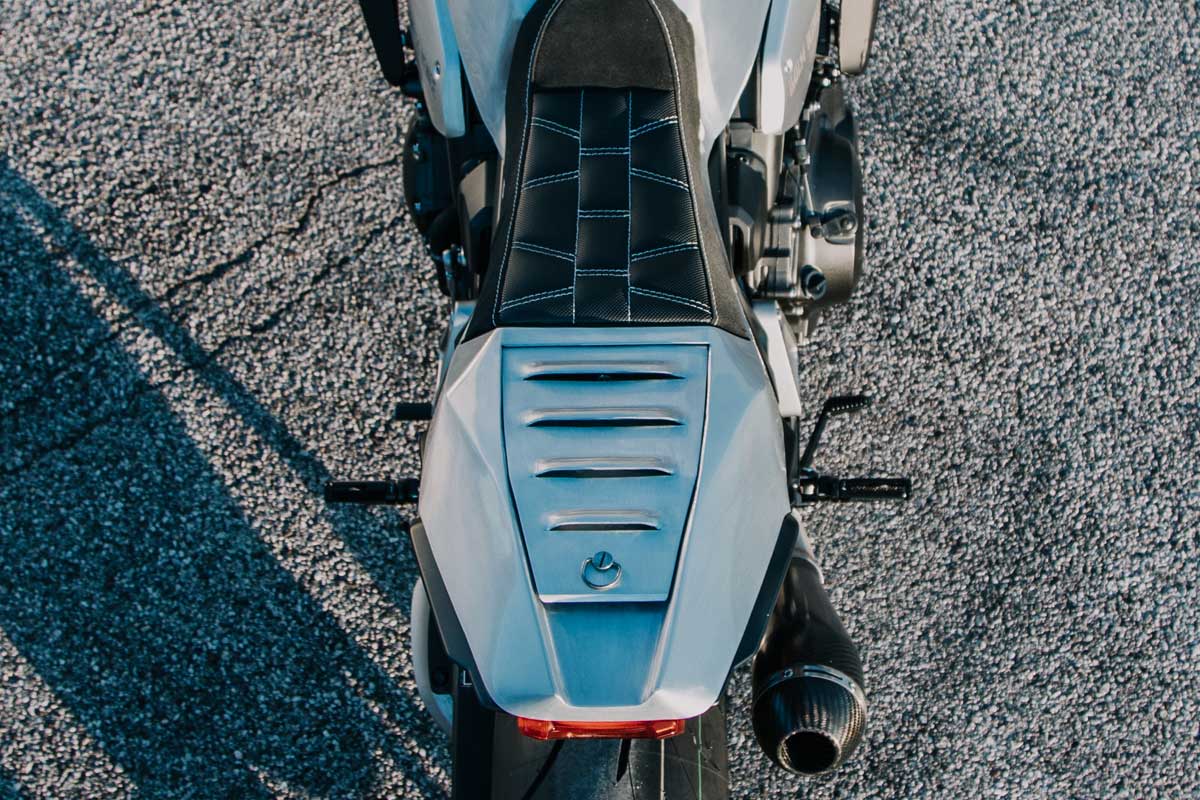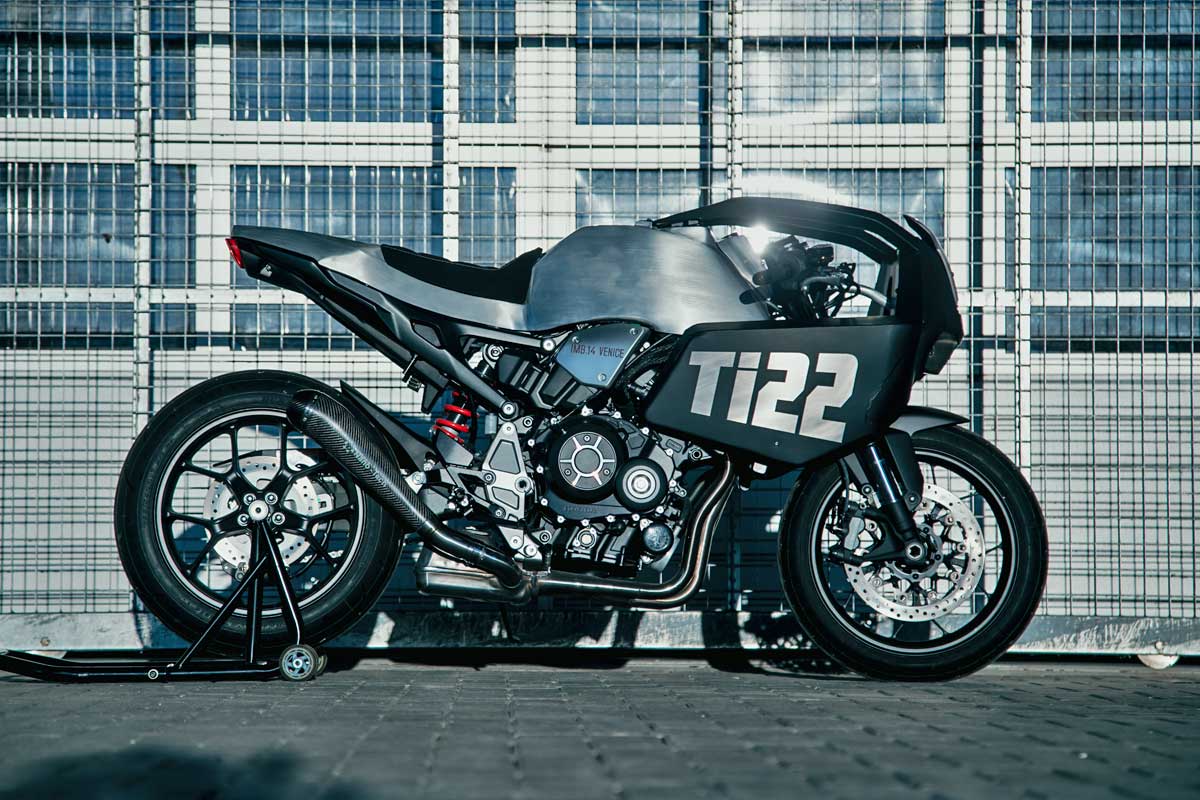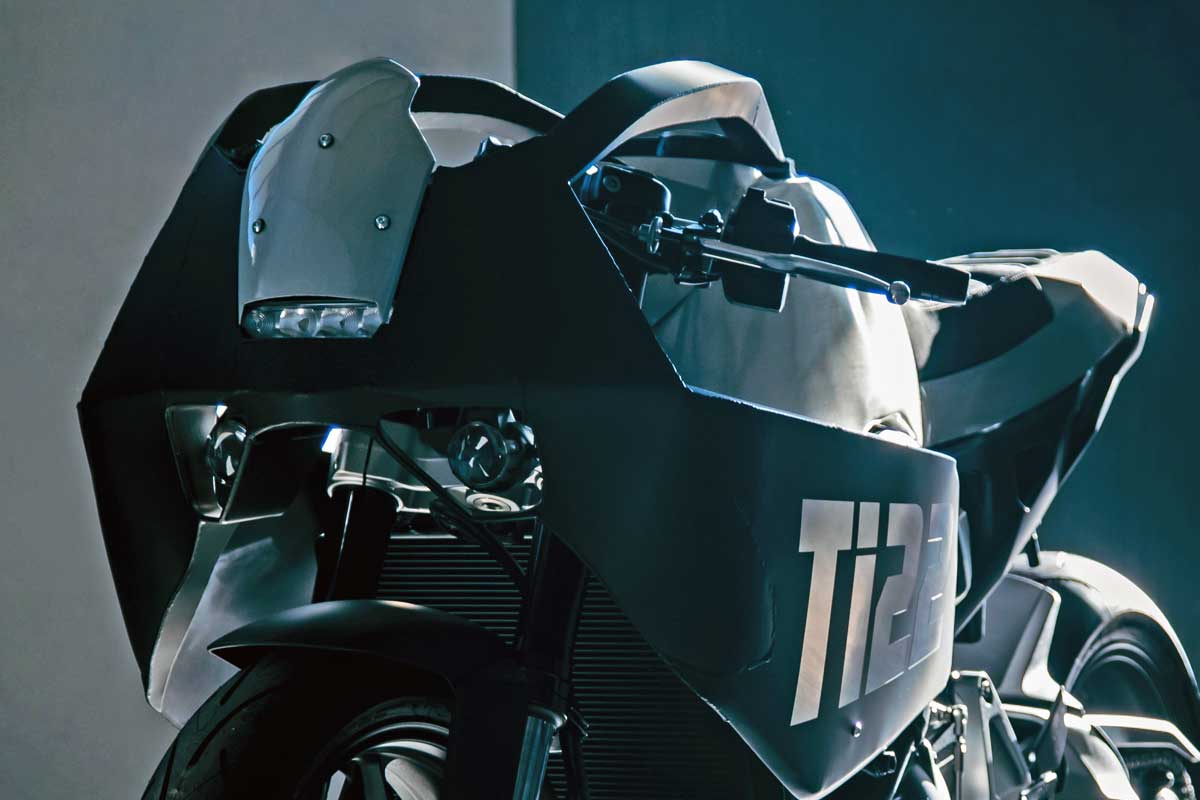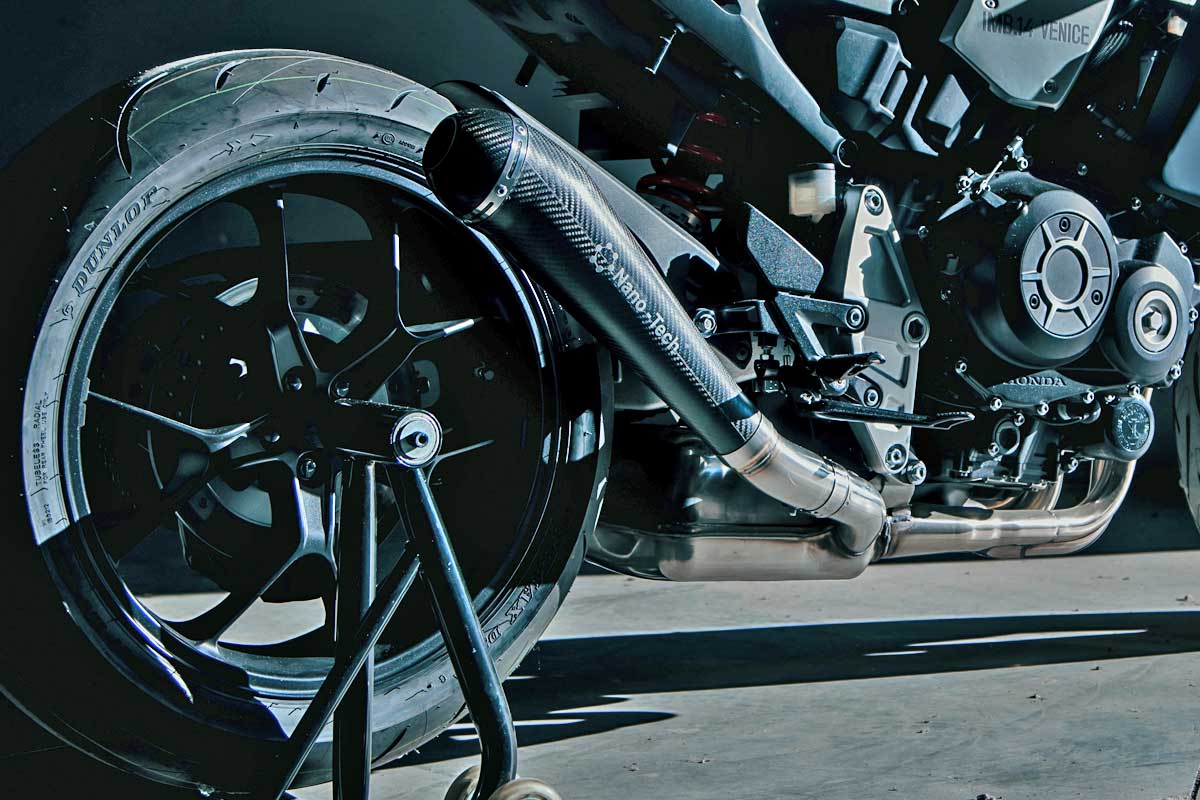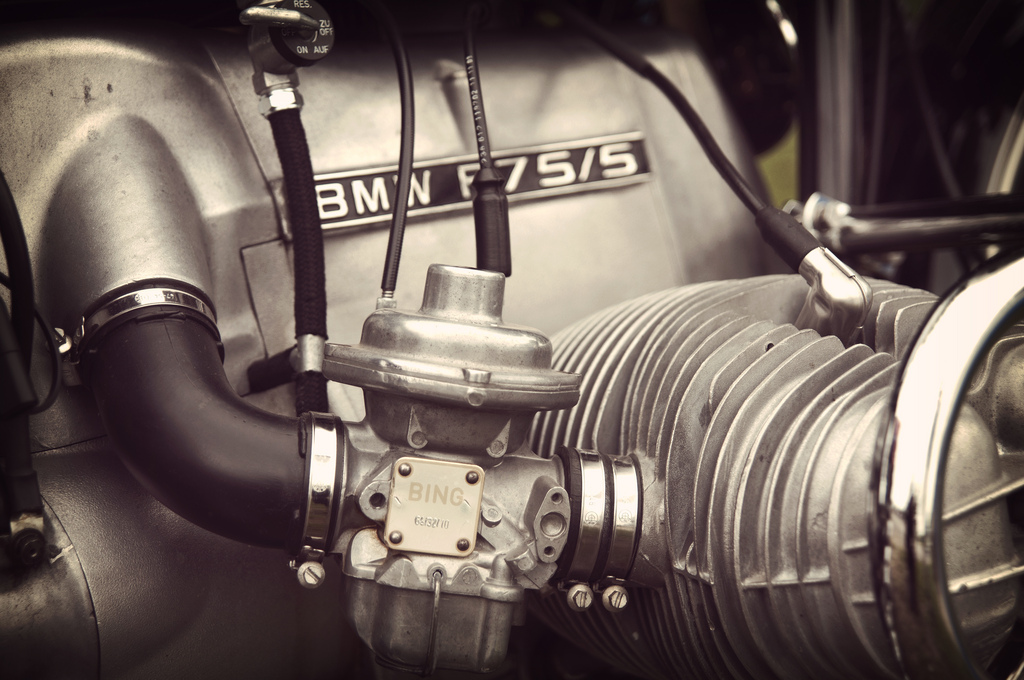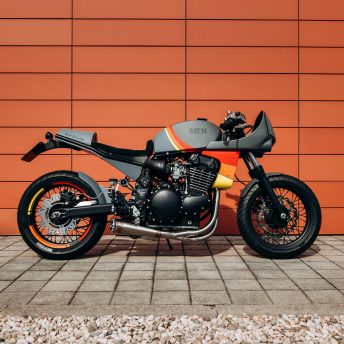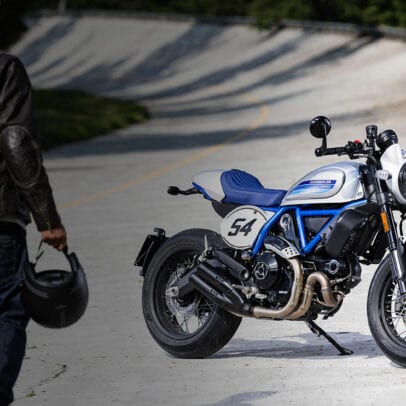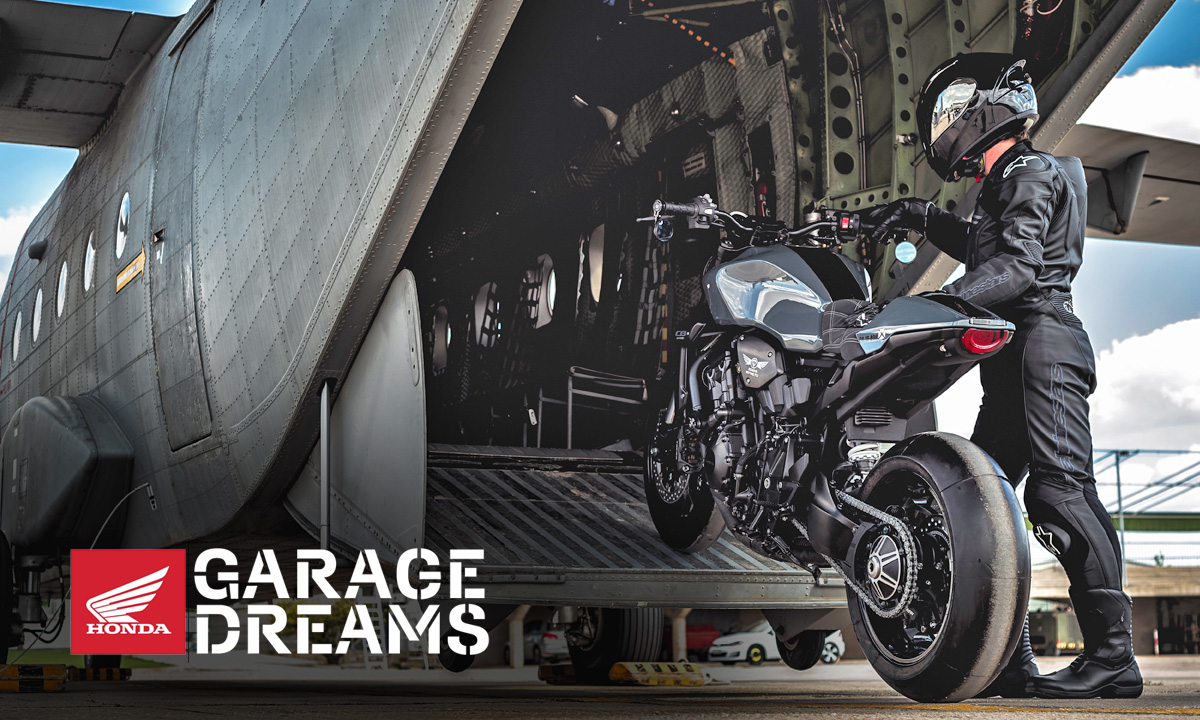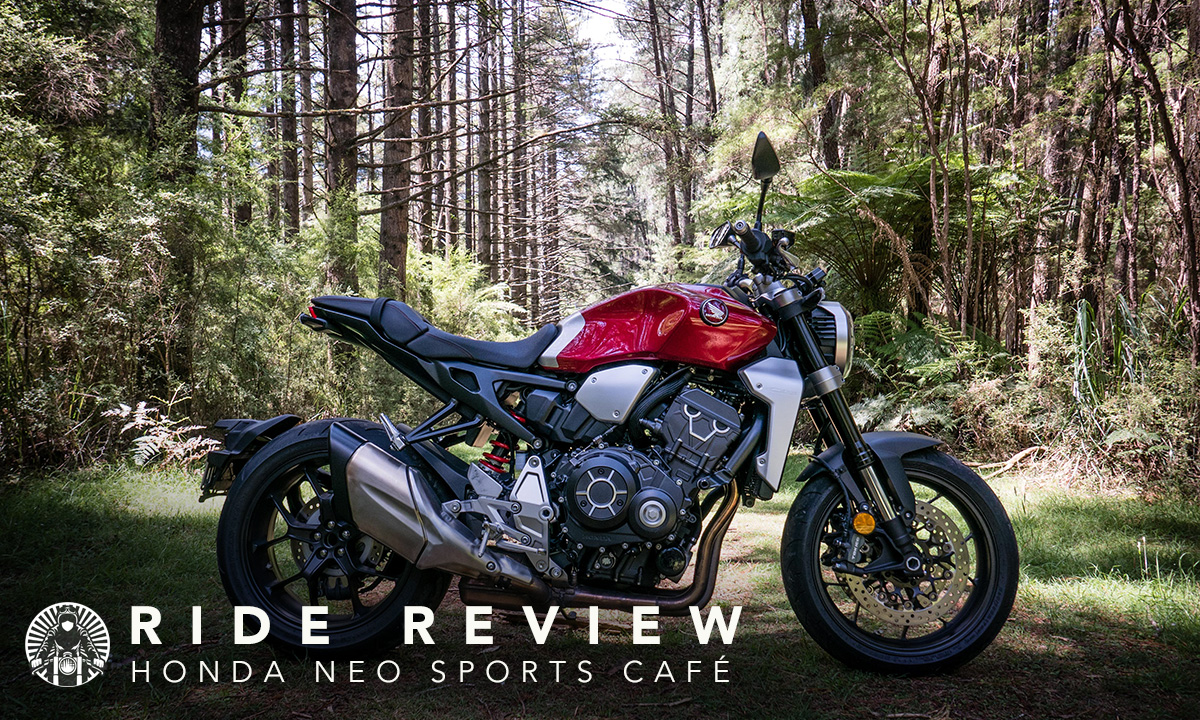Despite Honda’s categorisation, we think the CB1000R Neo-Sports Cafe is anything but standard. With 143bhp on tap and radical neo-retro styling, it’s a machine that is worthy of a lot more attention than it’s been given. Since the CB1000Rs release, very few have been modified by professional builders. So far we’ve seen a handful of them tweaked in a retailer vs retailers build off, but that’s about it. So when Maurizio Carraro of Imbarcadero 14 Venice posted shots of his custom Honda CB1000R project we knew we’d have to find out more.
For the creation of the CB1000R Honda started out with an engine originally developed for their Fireblade. Despite being de-tuned for more comfortable urban commuting the inline-four produces a whopping 143bhp. That’s more horses than any other modern motorcycle that claims to be a cafe racer. Beyond the engine pretty much everything else on the CB1000R is new. From the bikes tubular frame to it’s Showa suspension and 10 spoke wheels – it was all developed from the ground up. Honda is obviously very proud of this fact. When their Italian branch invited Maurizio and his team to customize a CB1000R for the upcoming Verona Motor Bike Expo they were given strict instructions to not mess with those elements. For some builders, this may have been the end of the conversation, but IMB14 like a good challenge. So despite a seemingly restrictive brief, they got to work creating a showstopping CB1000R.
The concept IMB14 developed for the project was for an “avant-garde” motorcycle that offered everyday rideability. Adhering to Honda’s request the chassis and suspension would remain untouched. This left IMB14 nothing but factory mounts and brackets to work with. Since this meant everything they added could be swapped out for the original parts they coined the project ‘Reversa’.
“In the beginning, the project was laid out in pencil sketches inspired by 1980s Lamborghinis,” says Maurizio. “Then we made a 3D render to determine the exact geometry of the pieces.” From there the IMB14 team moved straight into building their custom CB1000R bodywork. A strict timeframe didn’t allow for the development of moulds or bucks so they made the bold decision to shape everything by hand.
The bike’s monocoque body was formed from sheets of aluminium welded together to create the single unit. Careful attention was paid to how the bodywork sat on the frame, adding notches and changes in width to mimic the shape of the chassis. In the rear, you’ll find the factory taillight and a louvred storage compartment. Up front is an aircraft-style filler and the factory gauge and ignition recessed into the tank. An Alcantara eco-leather saddle connects the dots and has stitching inspired by the geometric shapes in the bodywork. Amazingly the entire monocoque unit is secured to the bike using a mere 3 fasteners.
The fairing is an equally impressive feat of hand-formed bodywork. The design bulks up the front end giving the custom CB1000R a bullish stance. Adding bulk generally means additional weight but not in this instance. The entire structure is made from lightweight titanium. Although it offers no weight benefit over aluminium, titanium is much stronger and more rigid so there’s very little flex in the fairing at any speed. The Ti22 livery represents the atomic symbol of Titanium and adds an air of performance to the whole package. Similar to the body the fairing secures to the CB1000R chassis using only a handful of screws.
To complement the relocated dash and fairing, IMB14 installed a bespoke top clamp and clip-on handlebars. Custom footpegs reposition the rider’s feet appropriately and all remaining lighting is custom. As for performance, the upgrades are limited to a one-off carbon muffler by Italian sports car tuners Nano-Tech S.P.A.
Although the work on this custom CB1000R could be flagrantly referred to as a body kit, it’s clear this project was no walk in the park. The team at Imbarcadero 14 Venice have shown us once again that they are one of Italy’s most creative workshops. Here’s hoping we’ll be seeing more from them soon.
Photography by Giovanni Federici
